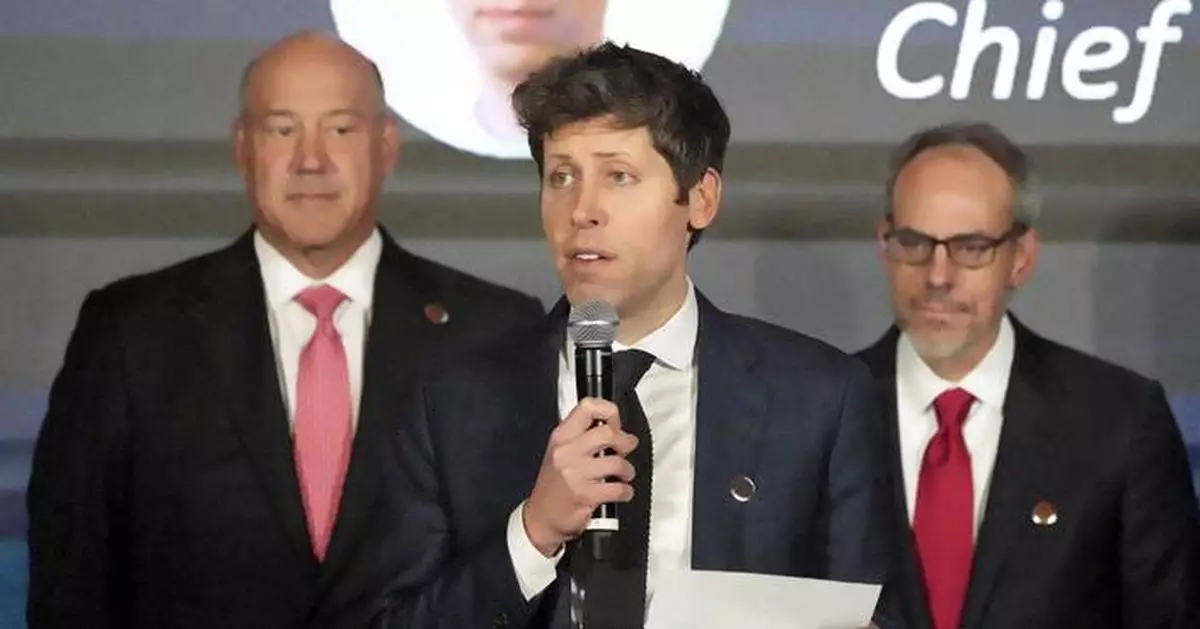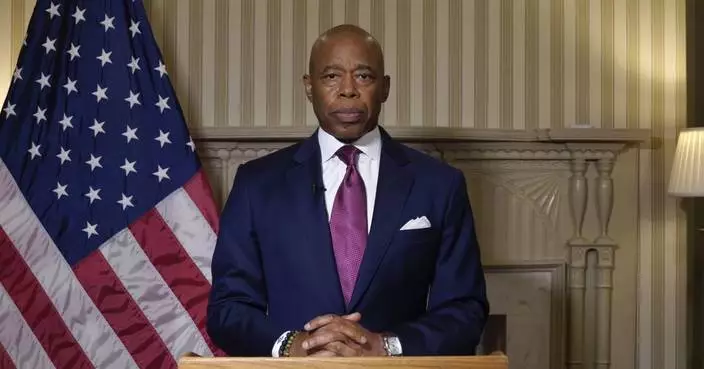OpenAI's history as a nonprofit research institute that also sells commercial products like ChatGPT may be coming to an end as the San Francisco company looks to more fully convert itself into a for-profit corporation accountable to shareholders.
The artificial intelligence company’s board is considering a decision that would change OpenAI into a public benefit corporation, according to a source familiar with the discussions who wasn’t authorized to speak publicly about them.
While OpenAI already has a for-profit division, where most of its staff works, it is controlled by a nonprofit board of directors whose mission is to help humanity. That would change if the company converts the core of its structure to a public benefit corporation, which is a type of corporate entity that is supposed to help society as well as turn a profit.
No final decision has been made by the board and the timing of the shift hasn’t been determined, the source said.
OpenAI’s CEO Sam Altman acknowledged in public remarks Thursday that the company is thinking about restructuring but said the departures of key executives the day before weren’t related.
Speaking at a tech conference in Italy, Altman mentioned that OpenAI has been considering an overhaul to get to the "next stage." But he said it was not connected to the Wednesday resignations of Chief Technology Officer Mira Murati and two other top leaders.
“OpenAI will be stronger for it as we are for all of our transitions,” Altman told the Italian Tech Week event in Turin. “I saw some stuff that this was, like, related to a restructure. That’s totally not true. Most of the stuff I saw was also just totally wrong,” he said without any more specificity.
“But we have been thinking about (a restructuring),” he added.
OpenAI said Thursday that it will still retain a nonprofit arm.
“We remain focused on building AI that benefits everyone and as we’ve previously shared we’re working with our board to ensure that we’re best positioned to succeed in our mission,” it said in a written statement. “The nonprofit is core to our mission and will continue to exist.”
OpenAI is not the first technology company to try to balance commercial and humanitarian objectives but its maneuvers drew a rebuke Thursday from Mozilla, which blends a nonprofit foundation and research hub with a company known for making the Firefox web browser.
“The principled staff exodus at OpenAI is another example of their true long-term goal: profit,” said Mozilla president Mark Surman in an emailed statement. “As far as we can tell, OpenAI no longer exists as a public interest organization.”
Altman asserted Thursday that the resignations of Murati, Chief Research Officer Bob McGrew and another research leader, Barret Zoph, were “just about people being ready for new chapters of their lives and a new generation of leadership."
But the exits were the latest in a string of recent high-profile departures that also include the resignations of OpenAI co-founder Ilya Sutskever and safety team leader Jan Leike in May. In a statement, Leike had leveled criticism at OpenAI for letting safety “take a backseat to shiny products.”
Much of the conflict at OpenAI has been rooted in its unusual governance structure. Founded in 2015 as a nonprofit with a mission to safely build futuristic AI to help humanity, it is now a fast-growing big business still controlled by a nonprofit board bound to its original mission.
This unique structure made it possible for four OpenAI board members — Sutskever, two outside tech entrepreneurs and an academic — to briefly oust Altman last November in what was later described as a dispute over a “significant breakdown in trust” between the board and top executives. But with help from a powerful backer, Microsoft, Altman was brought back to the CEO role days later and a new board replaced the old one. OpenAI also put Altman back on the board of directors in March.
It may not be easy to change OpenAI’s corporate structure, even if it's designed to make investors and employees happy.
Tax experts have said that OpenAI’s corporate structure appeared to be set up to give the tax-exempt nonprofit entity full control of the for profit entities that the organization created as its growth started to take off.
In 2016, the goal of OpenAI’s founders — a group that included Altman and Tesla CEO Elon Musk — was to “advance digital intelligence in the way that is most likely to benefit humanity as a whole, unconstrained by a need to generate financial return.”
A few years later, the organization realized it needed billions of dollars to finance the computing power required to develop AI technologies. “We want to increase our ability to raise capital while still serving our mission, and no pre-existing legal structure we know of strikes the right balance,” wrote co-founders Sutskever and Greg Brockman in 2019.
So they set up a new for-profit corporation with a “cap” on the amount of profits that investors or employees could reap and put the nonprofit and its board in charge of the new entity.
Any “excess” profit would go back to the nonprofit, Brockman and Sutskever explained, though in practice little money has gone back to the nonprofit in recent years. Brockman has been on leave since August, leaving Altman one of the few early leaders still at the helm.
In research published in February, Ellen P. Aprill, professor emerita of tax law at Loyola Marymount University, noted that OpenAI's structure appeared to be “painstakingly” designed to protect its nonprofit status.
All of its subsidiary corporations are governed or managed by the nonprofit and its board, and OpenAI says it warns investors that they may never receive a return.
However, Aprill and her colleagues pointed to Altman's ouster and reinstatement as evidence that the nonprofit’s board may not be meaningfully in charge. “Unless the members of the board fulfill their fiduciary duties... even the most carefully thought-out structures are for naught,” Aprill and her co-authors wrote.
——
The Associated Press and OpenAI have a licensing and technology agreement that allows OpenAI access to part of AP’s text archives.

FILE - Sam Altman, right, CEO of ChatGPT maker OpenAI, and Mira Murati, chief technology officer, appear at OpenAI DevDay, OpenAI's first developer conference, on Nov. 6, 2023 in San Francisco. (AP Photo/Barbara Ortutay, File)

FILE - Open AI Chief Executive Officer Sam Altman (C) speaks at the Advancing Sustainable Development through Safe, Secure, and Trustworthy AI event on Sept. 23, 2024, in New York. (Bryan R. Smith/Pool Photo via AP)










